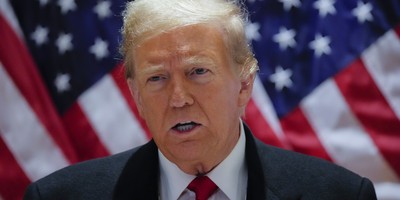North Korea: A spokesman for the National Defense Commission announced a clarification of its position regarding the alleged attempt to destroy the statues of the two Kims in Pyongyang. It vowed propaganda, physical and psychological reprisals against the Republic of Korea and the US, deriving from the North's military first policy.
Comment: Today's statement suggests the power struggle over priority access to national resources is not settled. This statement was from the senior armed forces leadership, hiding behind a spokesman. It asserted that the military remains first and that this is the defensive shield of the country.
The problem is that Kim Jong-un did not endorse those statements and the military first policy appears to be undergoing revision. Today's statement appears to represent advocacy against a policy change by persons on the National Defense Commission, rather than a threat of action against South Korea.
North Korean military leaders are not above staging a provocation to justify their policy position and to intimidate their young leader and his advisors.
Pakistan: Update. By 25 July, the government of Prime Minister Ashraf had been under a Supreme Court order to request the resumption of criminal corruption proceedings against President Zardari that had been underway in Switzerland before he was elected president. Their suspension was part of the deal that allowed Musharraf to leave office without prosecution for constitutional crimes.
On 25 July, the Supreme Court gave the government two more weeks to contact the Swiss to resume the proceedings. The Court said it did not wish to cause the downfall of another government, as the reason for the extension.
Comment: The Supreme Court has come under domestic and international pressure for allegedly overreaching its authority in convicting former Prime Minister Gilani of contempt. That pressure explains the extension.
The government's argument is that a sitting president is immune from prosecution while in office. While that is true for crimes committed while in office, that provision Pakistan's constitution is irrelevant to crimes and proceedings begun before the man became president.
Recommended
The Supreme Court has ordered the Pakistani government to send a letter to Switzerland to resume its investigation of Mr. Zardari, not President Zardari.
Comment: Another constitutional crisis has been postponed. The Supreme Court has demonstrated that it is sensitive to popular pressure and probably will find a way to allow the government to complete its term in office, without compromising the Court's authority. The crisis is postponed, not suspended.
Syria: Update. Most media have reported on the large setbacks to the Syrian opposition that the seemingly tottering al Asad government delivered in the past half week. Government forces cleared the worst of the fighters from Damascus and from the one base neighborhood in Aleppo.
The more ominous problem is the emergence of the Syrian Muslim Brotherhood as the public voice of the fractious and disorganized Syrian opposition. Over the weekend, the Brotherhood condemned the Asad government and all its backers.
Comment: The Syrian opposition leadership outside Syria has proven itself to be fractious and unable to lead or even organize the fighting groups inside Syria. Until recently, the most organized and capable group has been the al Qaida fighters from outside Syria. Suicide bombings and IEDs are their trademarks, but not grand strategy.
This weekend the Brotherhood surfaced -- grand strategists as ever. Open sources report little about the Brotherhood in Syria, which Hafez al Asad massacred during its 1982 uprising in Hama. The Brothers survived, obviously, and have a grudge match to play against the al Asads. They threaten to capture the opposition movement from within Syria because they are organized and focused on the political end game, not just killing Alawites.
Throughout the Arab states of the Middle East, the Brothers are having a better year in 2012 than they have ever had.
Notes for analysts:
Introduction to Strategic Intelligence Warning. DIA has announced that reconstitution of Indications and Warning is a key component of its five year plan. Warning failures associated with the Arab Spring were cited as prompting this rediscovery of old truths.
Bravo to DIA for remembering that warning is the foundation of US intelligence. Being smart is less important than being safe, as a government activity.
The Mission
Strategic intelligence warning is the one of the two primary missions of US intelligence, according to the National Security Act of 1947. The first is to use intelligence to help keep the country prosperous and safe under all circumstances. Warning is the second mission. Discussion and debate about these missions may be found in the Congressional debates and legislative history of the National Security Act.
The intent of Congress in 1947, as documented in the legislative history of the National Security Act, was that Pearl Harbor attacks should never occur again. Their prevention was the reason Congress and a very reluctant President Truman approved the US intelligence organizations in the Department of Defense and in the then-new CIA.
Every intelligence analyst who has not read the National Security Act of 1947 and National Security Council Intelligence Directive -1 (NSCID-1) is deficient.
DIA, to its great credit, is trying to get back to the foundations of US intelligence: helping keep the Republic safe by providing intelligence warning.
This and subsequent essays are devoted to presenting to DIA Readers the history and foundation of warning that is in danger of being lost and does not need to be recreated.
These essays are derived from first-hand experience in DIA's own history in the Directorate of Intelligence, J2, Joint Chiefs of Staff; and from the warning experiences of the National Indications Center, the Strategic Warning Staff, the National Warning Staff and, much later, the Office of the National Intelligence Officer for Warning, established following the intelligence failures in 1973.
What is warning?
When NightWatch joined the Strategic Warning Staff in 1979, no one in the Staff or in the office of National Intelligence Officer for Warning could provide a definition of "warning." Warning was presented by a senior DIA warning officer as, "anything anyone wants to make of it."
NightWatch asked how can you ask analysts to do well what their supervisors cannot define?
An interagency group was formed by the National Intelligence Officer for Warning, David Y. McManis, in the aftermath of the overthrow of the Shah of Iran in 1979, which was another major US intelligence and warning failure. The members were intelligence and policy professionals who shared the concern about the lack of precision and the three decades of strategic intelligence failures in warning. They came up with a definition which they coordinated with all intelligence and operational organizations. It was a J2 and J3 definition in the early 1980's.
The definition, which was approved unanimously in multiple National Intelligence Estimates on warning topics and in the Joint Chiefs of Staff Publication No. 1, The Joint Dictionary, is as follows:
"Warning is a communication about a threat in a form, a time and a fashion to decision-makers to enable them to manage the threat by deterring or avoiding it or by preparing for its occurrence."
A threat was defined as damage that will occur in a foreseeable and measurable time frame, unless it is managed.
Every word in the definition is important.
What is Surprise?
Surprise is a multiplier of other effects. It cannot be studied without reference to some other action - such as a surprise tornado or a surprise expulsion of US forces. Surprise cannot be avoided, but the damage can and the multiplier effect can be negated completely. In summary, those are the lessons documented by the DIA J2 between 1998 and 2006.
Background
The radical departure reflected in the 1979 definition of warning can only be appreciated against earlier discussions that governed US intelligence between 1947 and 1970. The National Security Council Intelligence Directive-1 (NSCID -1) in 1950 directed all agencies to engage in warning. DCI directives implementing the NSCID defined warning as all those measures necessary to avoid surprise.
In late 1983, DCI William Casey told NIO/W McManis that he did not want to be surprised by anything. Zero tolerance for warning failure and a seamless web of warning, are the words Casey used. . Casey spoke in the language of policy-makers, not intelligence analysts.
Thirty years of trying to avoid surprise resulted in repeated surprises, during the 1950's, 1960's, and 1970's plus great damage to US national security interests in those decades. The statement by the Deputy DIA Director indicates the same tired, old failures afflicted DIA analysis of the Arab Spring in 2010… needlessly.
The great breakthrough was in the late 1970's when the interagency group recognized that surprise is a multiplier of good and bad developments. In connection with threats, surprise is a multiplier of damage.
Forty years of study by the US Intelligence Community, including ten years by the DIA J2, established that surprised cannot be studied by analysts as a unique topic, but only in connection with threat, which includes damage. Surprise is an adjective in its earliest definition, as in surprise attack or surprise birthday party or surprise condition. It is a noun only in an elliptical or metaphorical sense.
Surprise also refers to the alertness and readiness condition of US intelligence, not the actions of the intelligence target.
Many academic writers and 60 plus years of National Warning Staff and DIA J2 experience in strategic intelligence warning have established that surprise is not avoidable, but damage is.
The lessons of the National Warning Staff and the DIA J2 are that by concentrating on avoiding surprise, as an analytical challenge, the analysts will surely be surprise! However, by focusing on the potential damage --the threat -- the damage and the surprise condition both can be avoided.
Secondly, if damage cannot be avoided or occurs under conditions of surprise but US intelligence and US forces are warned and on alert, damage will be de minimis because early warning enabled readiness.
Indicators …
Analysis of symptoms, or indicators, is the oldest structured analytical technique in US intelligence history and it works with incredible accuracy. -- at least 90% accuracy in the DIA J2 experience.
For example, an indicator of the strength of the al Asad regime is that it not only cleared neighborhoods in Damascus, but also mounted a major attack against neighborhoods in Aleppo. in less than a week. This regime is not yet in danger of collapse. An indicator of its pending collapse would be abandonment of Aleppo to defend Damascus.
Qualitative indicators indicate processes at work. Quantitative indicators do not work. They were tried for three generations after World War II and failed.
Qualitative -- living systems -- indicators indicate that Syria, as a living system, is healthier than western media report. because it can defend its center and its key assets outside the center. The indicators indicate shrinkage, but not that collapse is imminent.
The 60 years of experience in analysis of indicators in US intelligence warning will be addressed in a future essay.
End of NightWatch ###
NightWatch is brought to readers of Townhall Finance by Kforce Government Solutions, Inc. (KGS), a leader in government problem-solving, Data Confidence® and intelligence. Views and opinions expressed in NightWatch are solely those of the author, and do not necessarily represent those of KGS, its management, or affiliates.
A Member of AFCEA International
























Join the conversation as a VIP Member